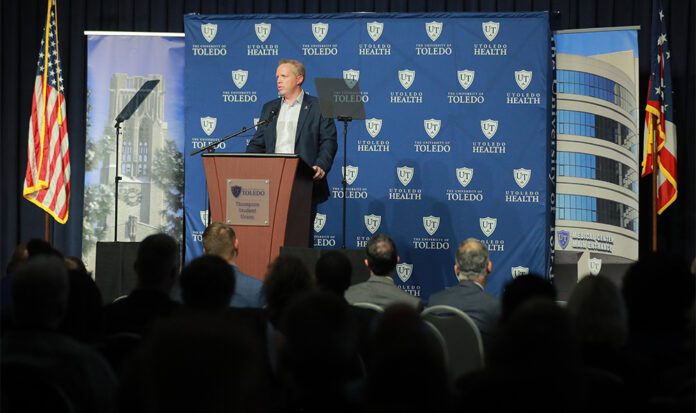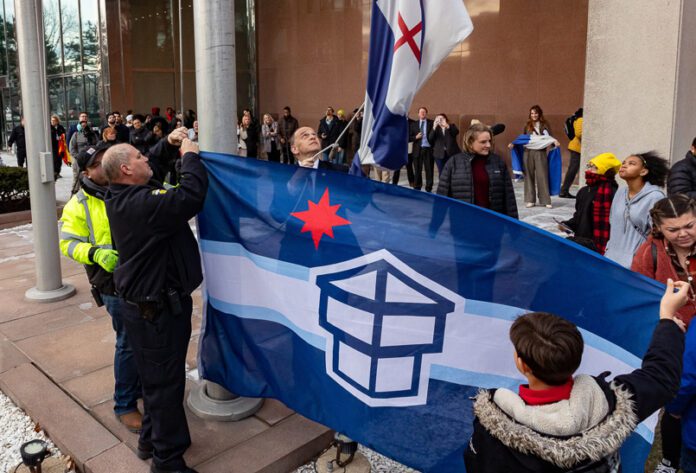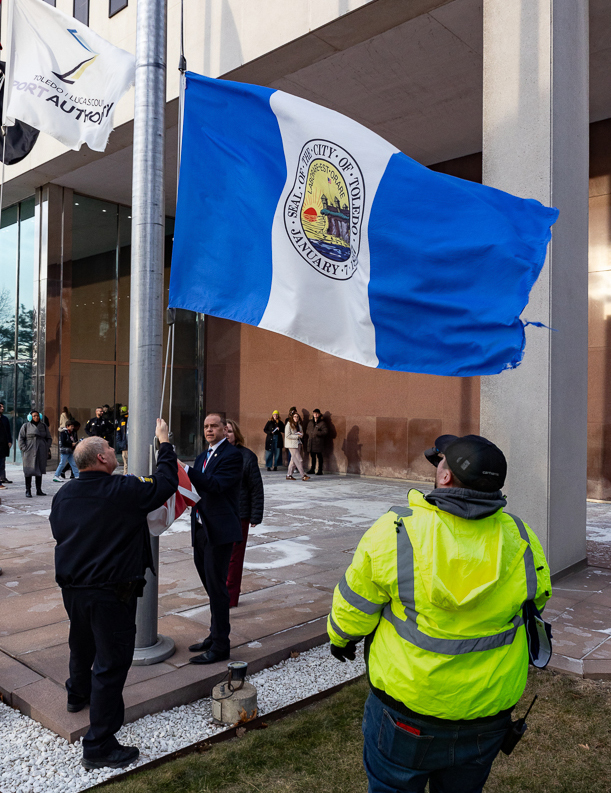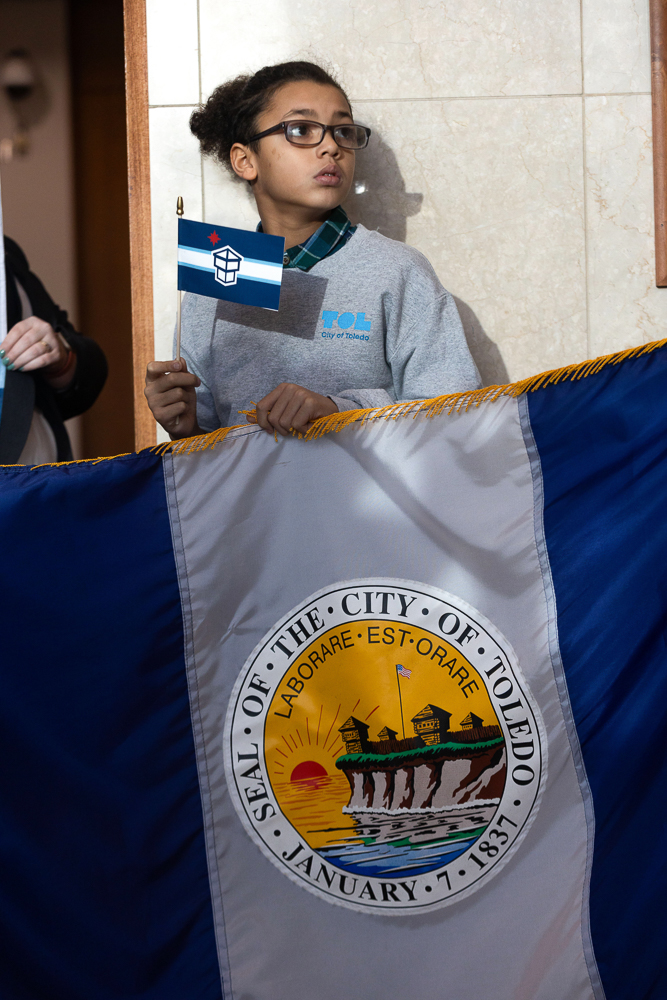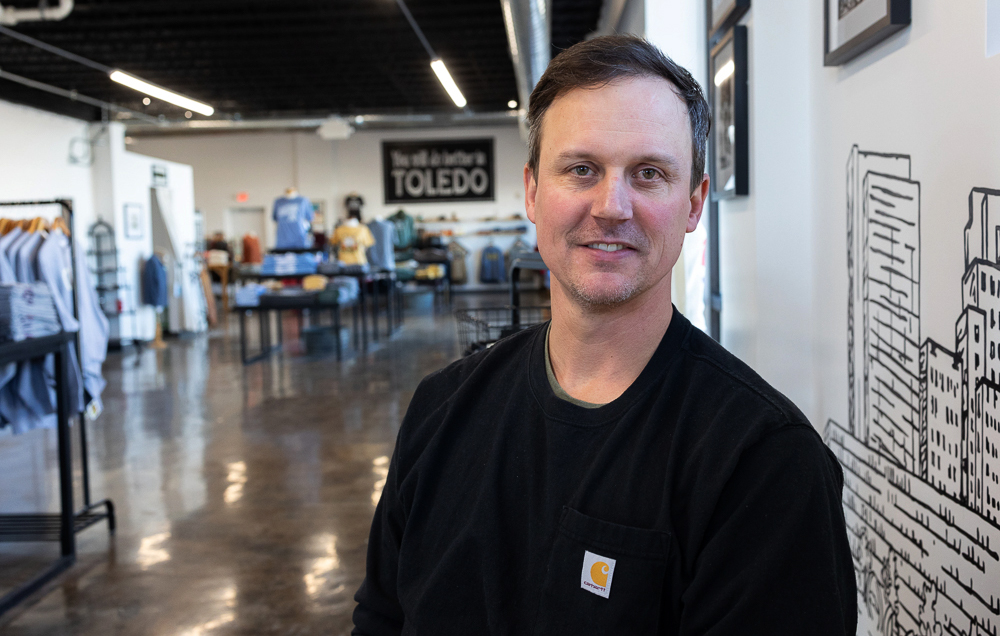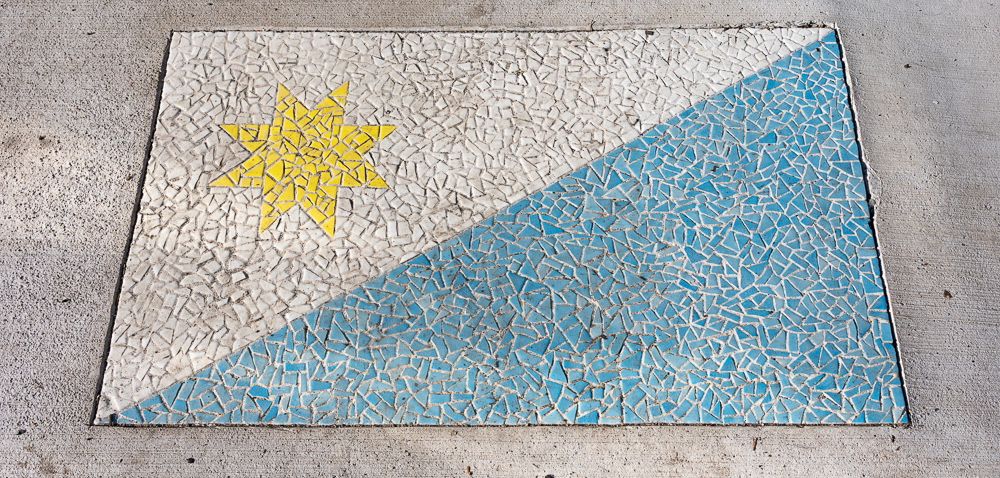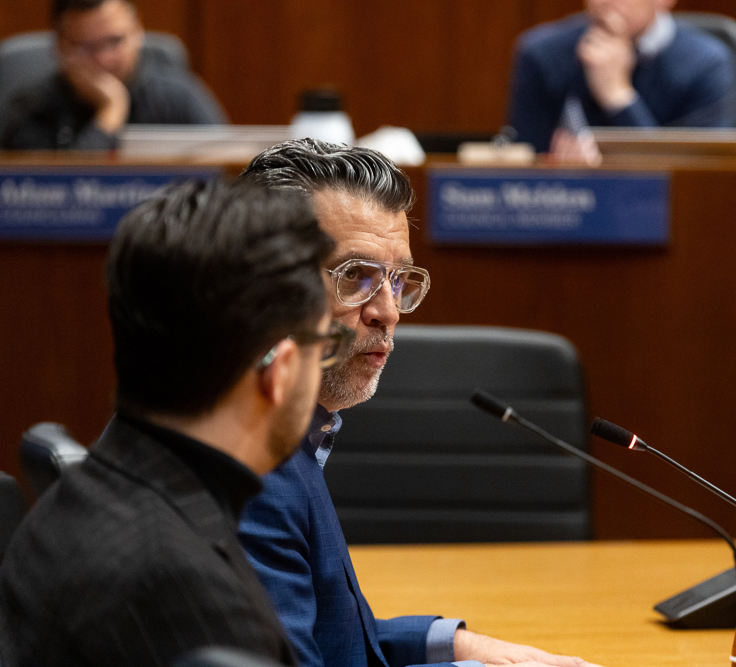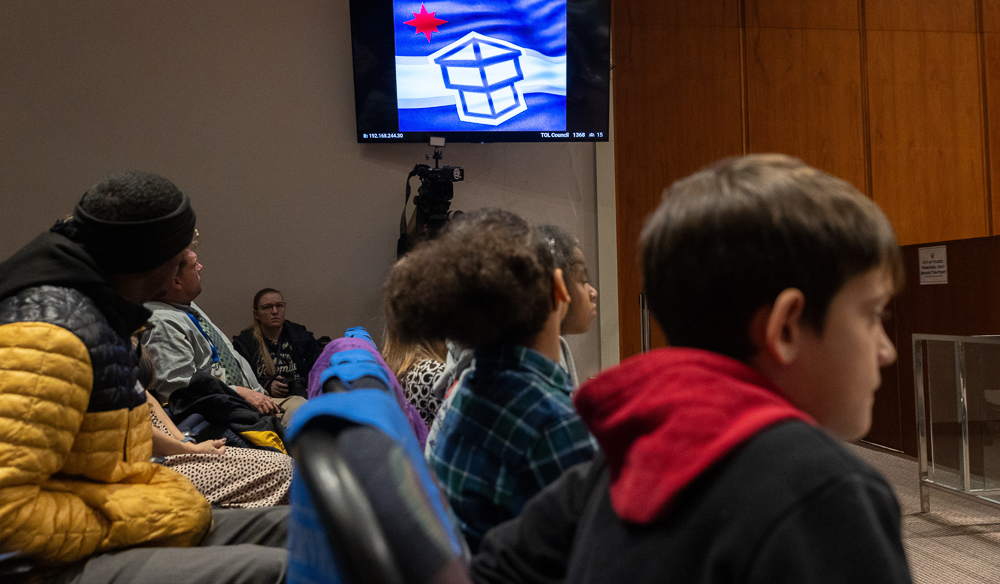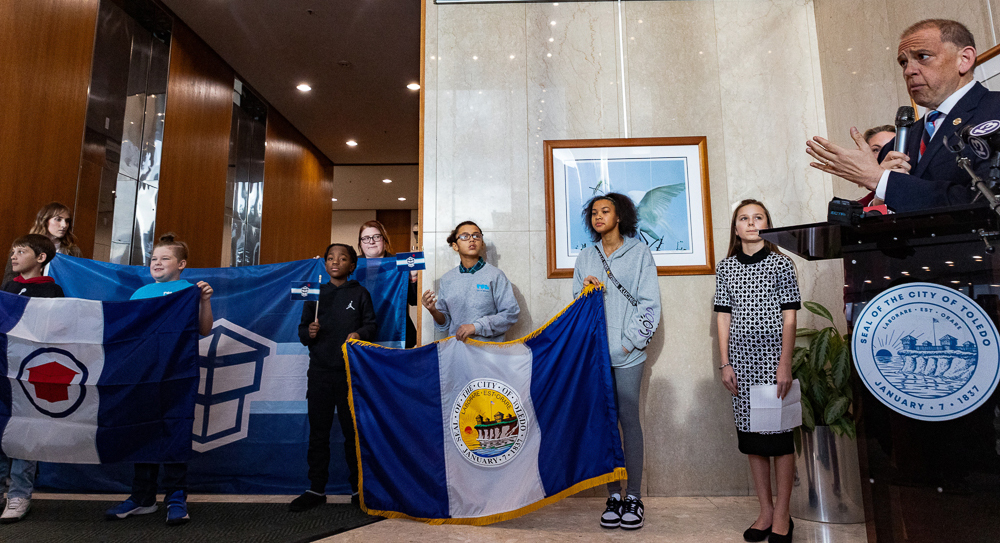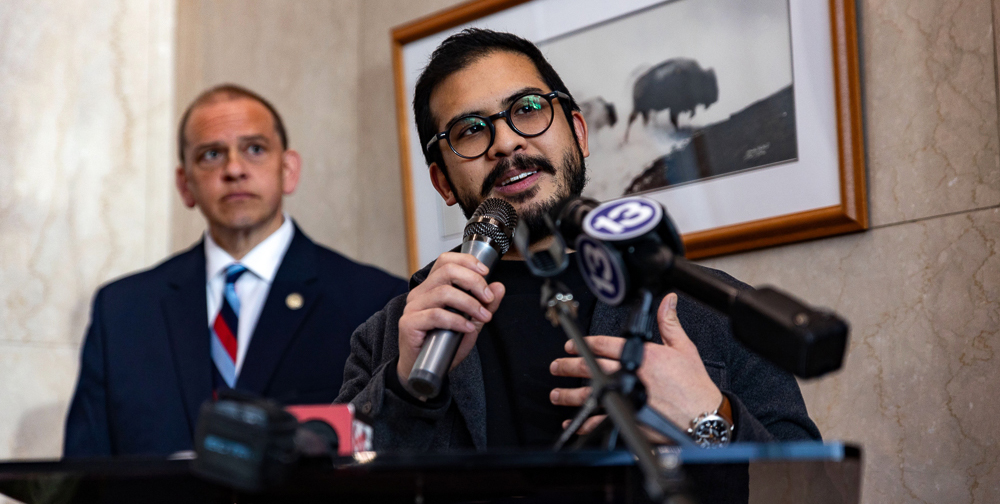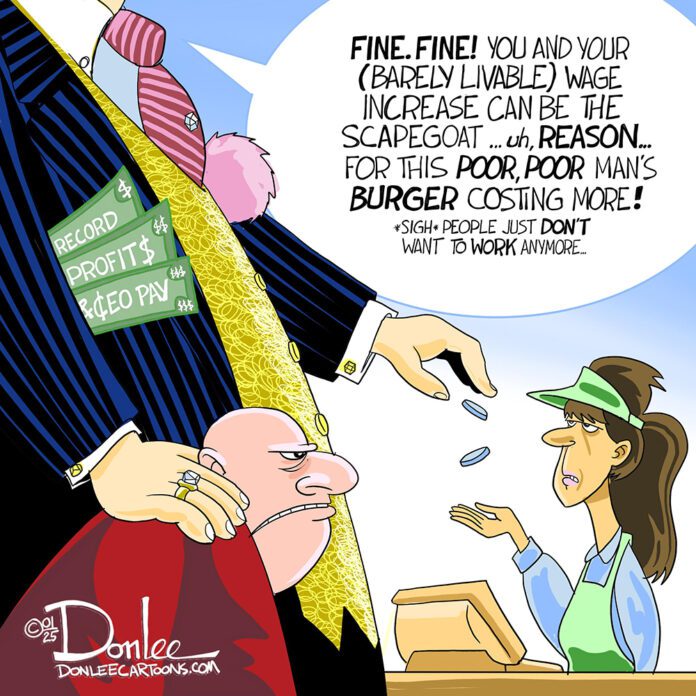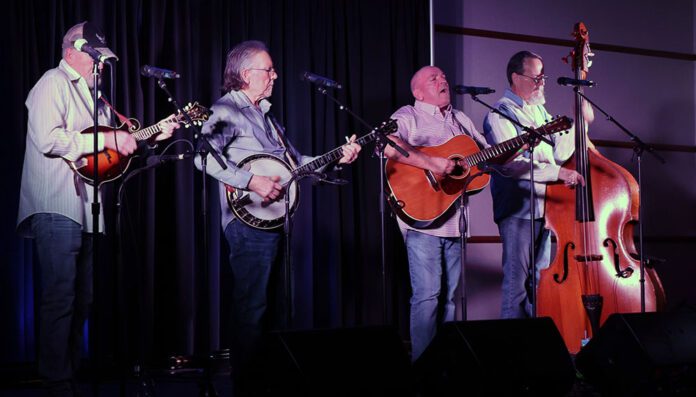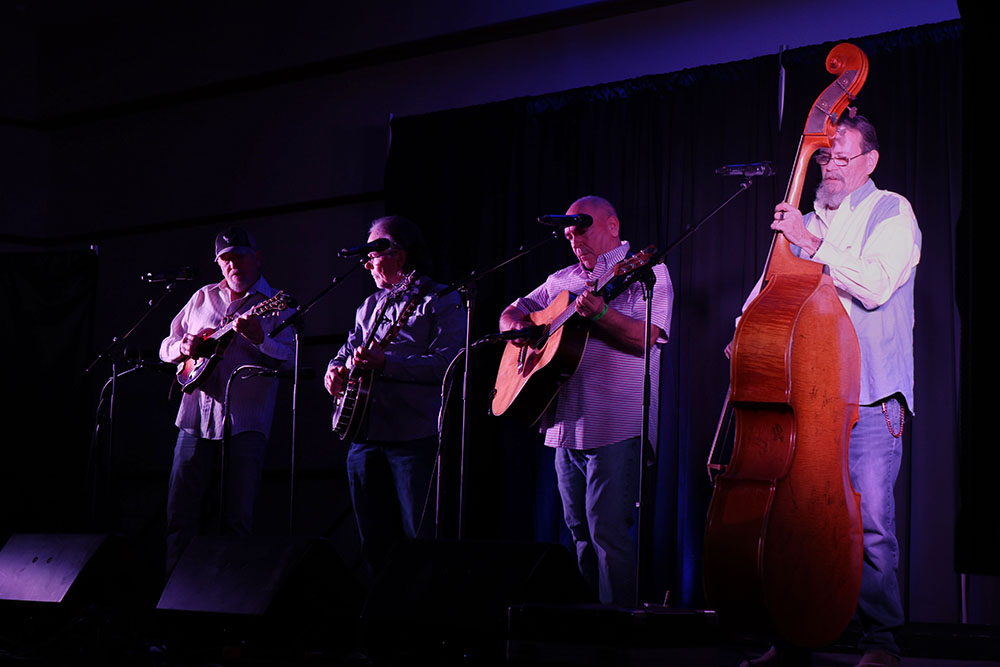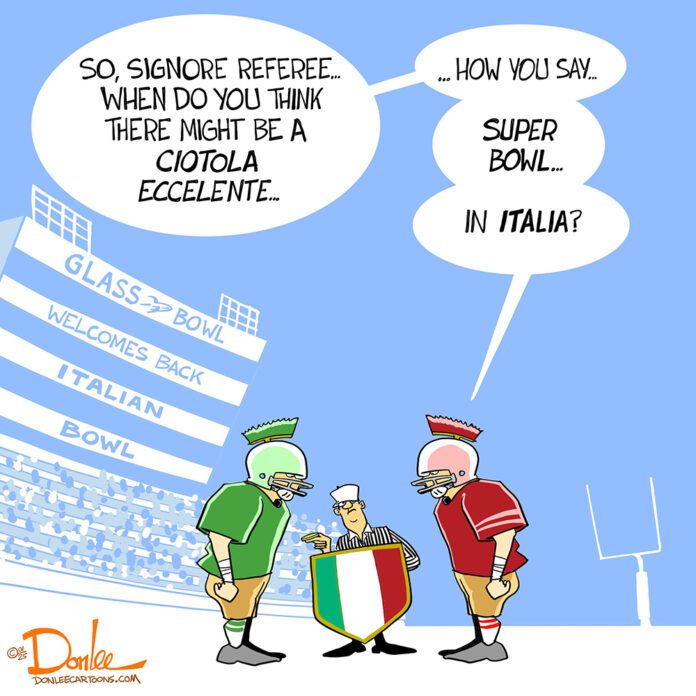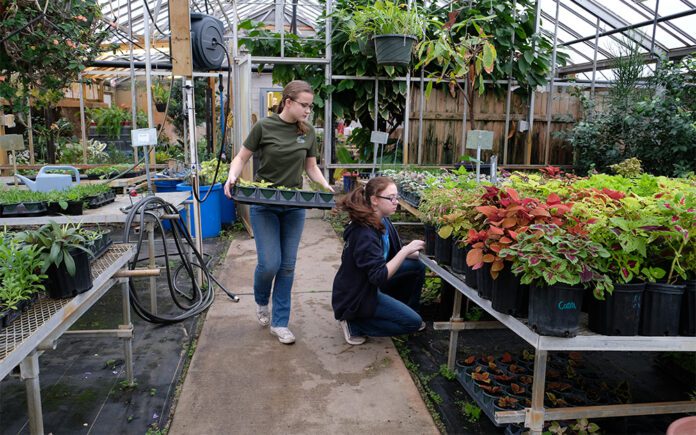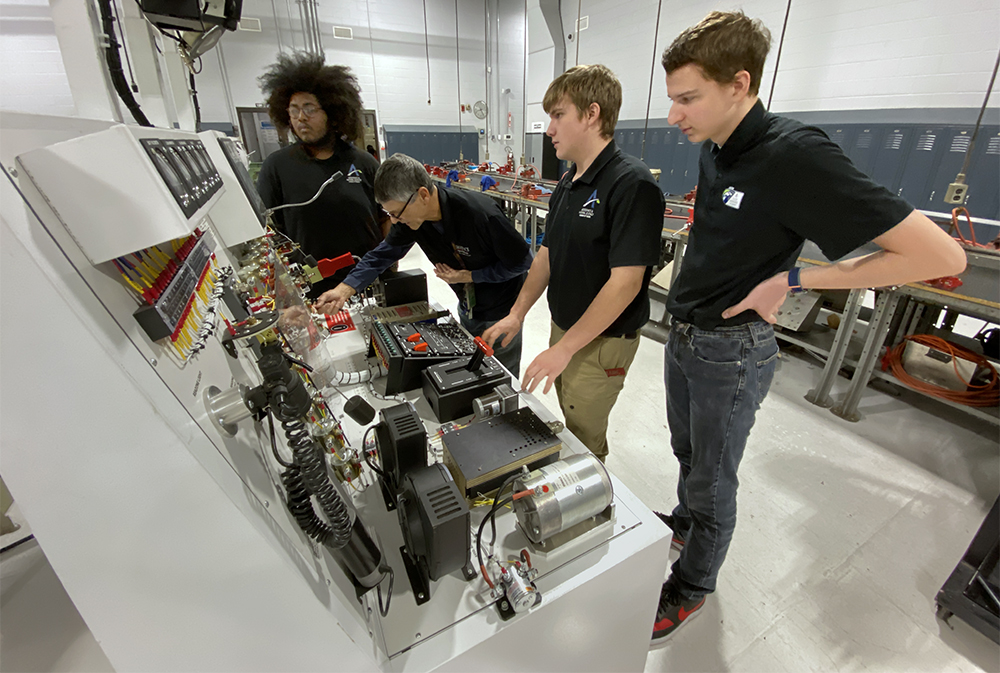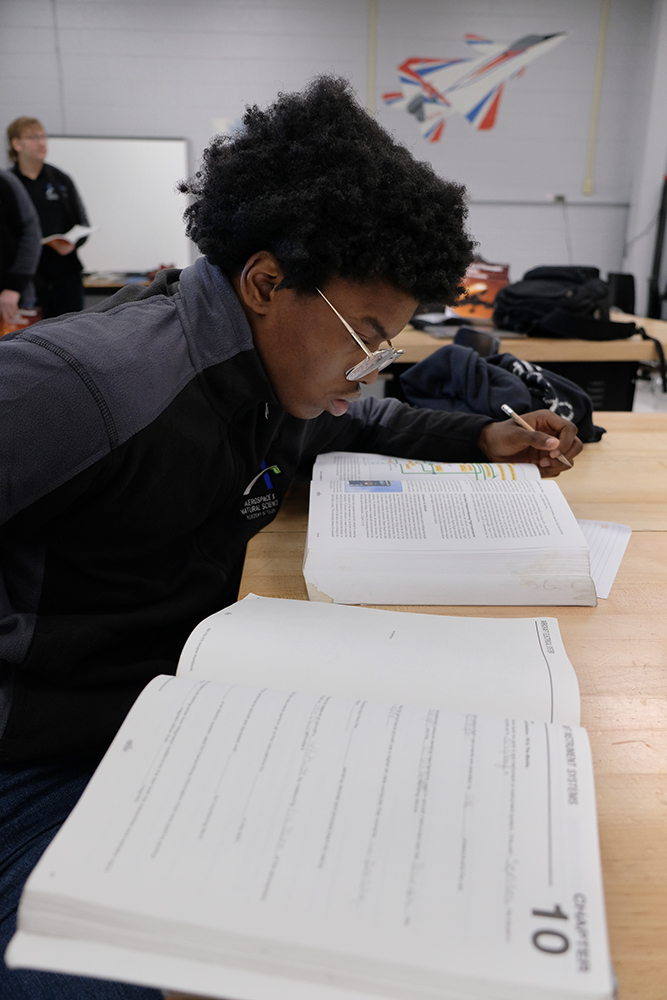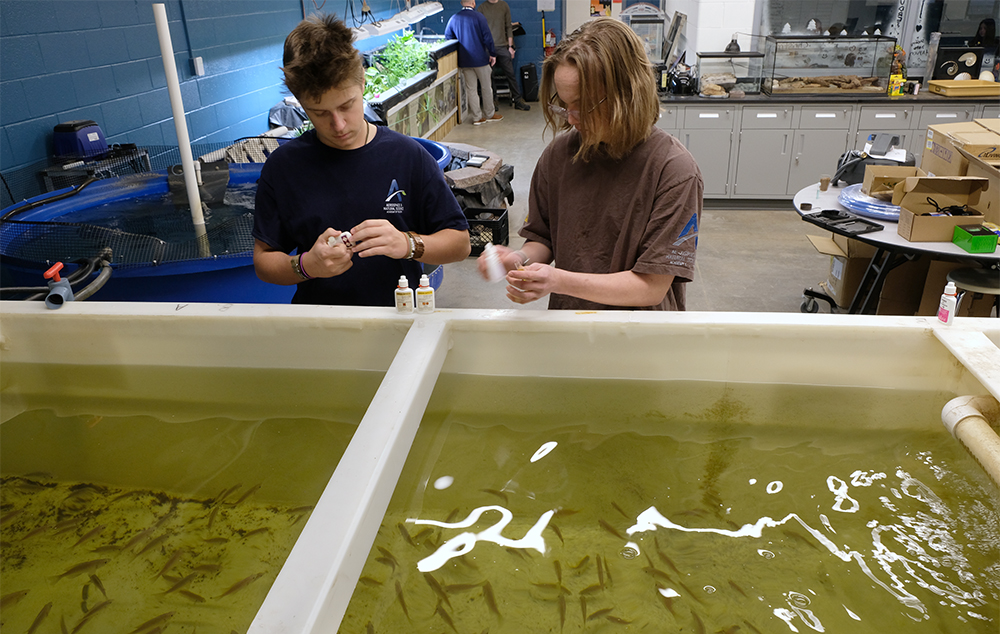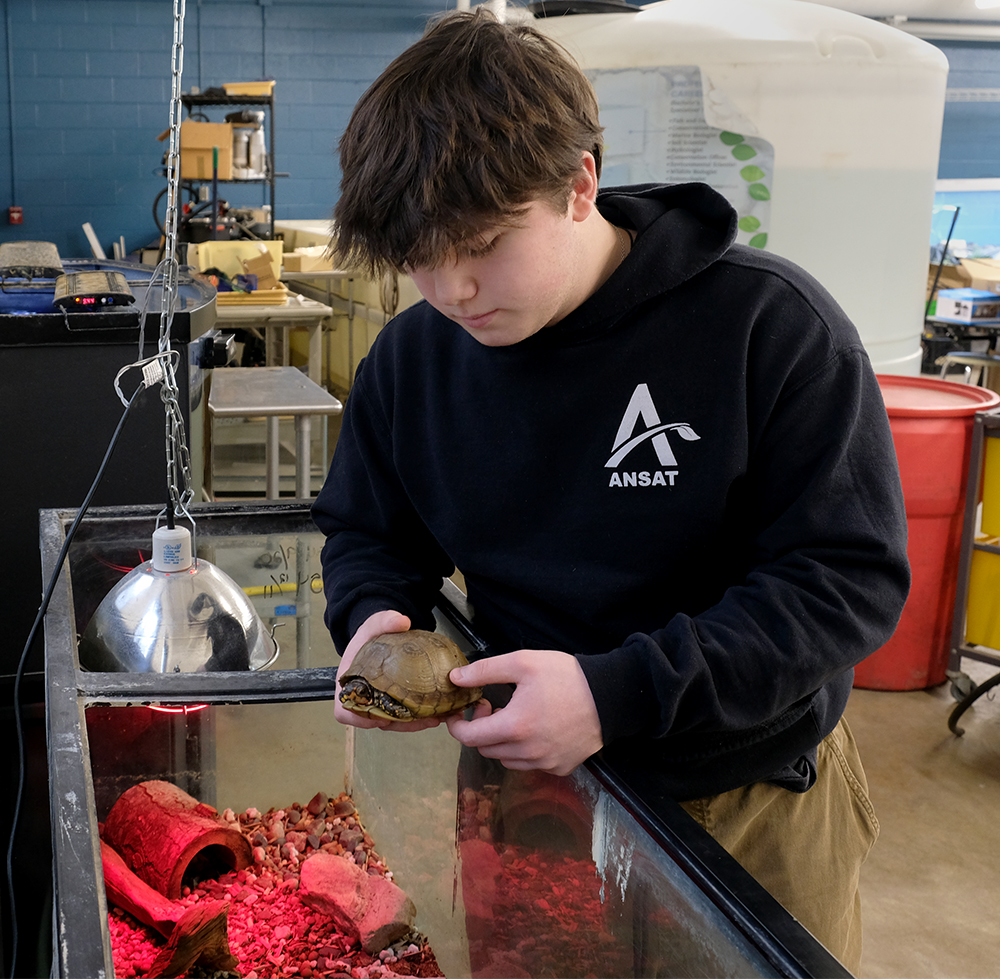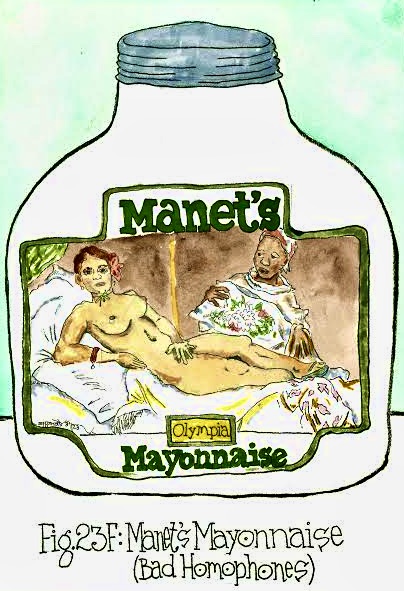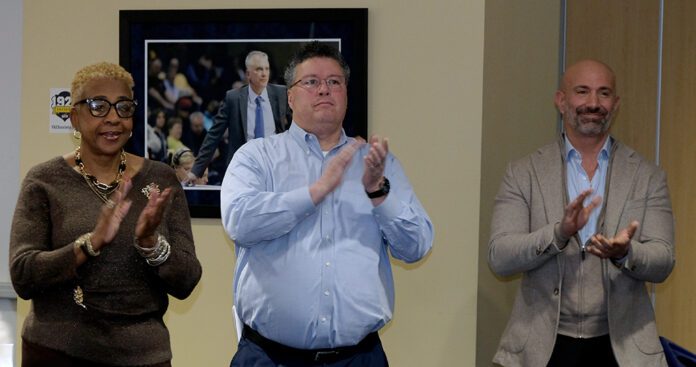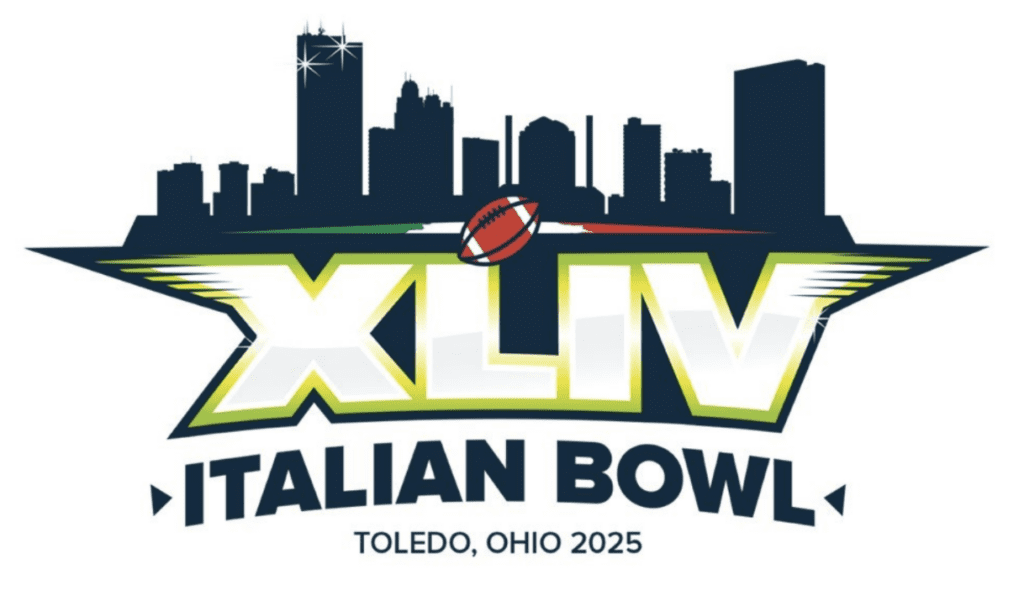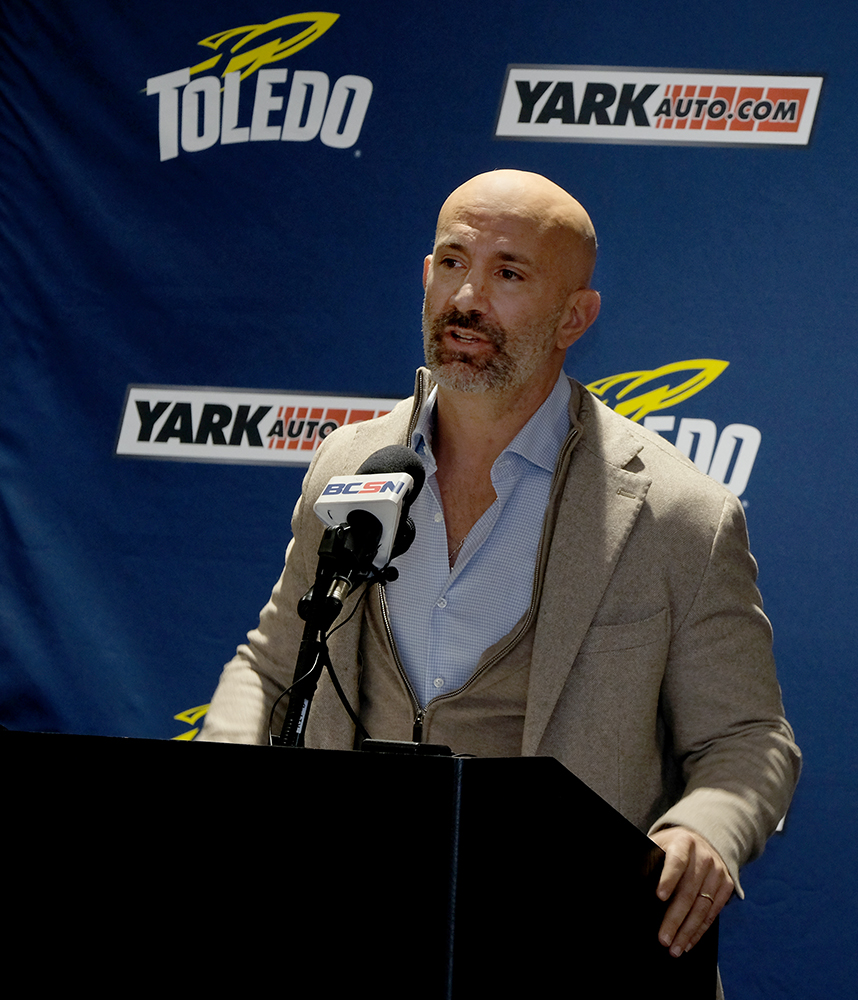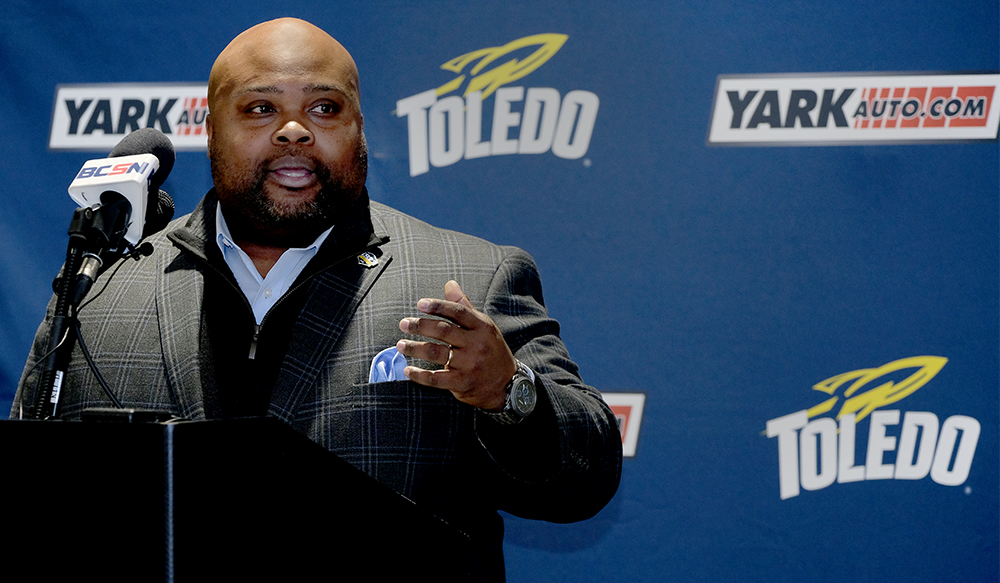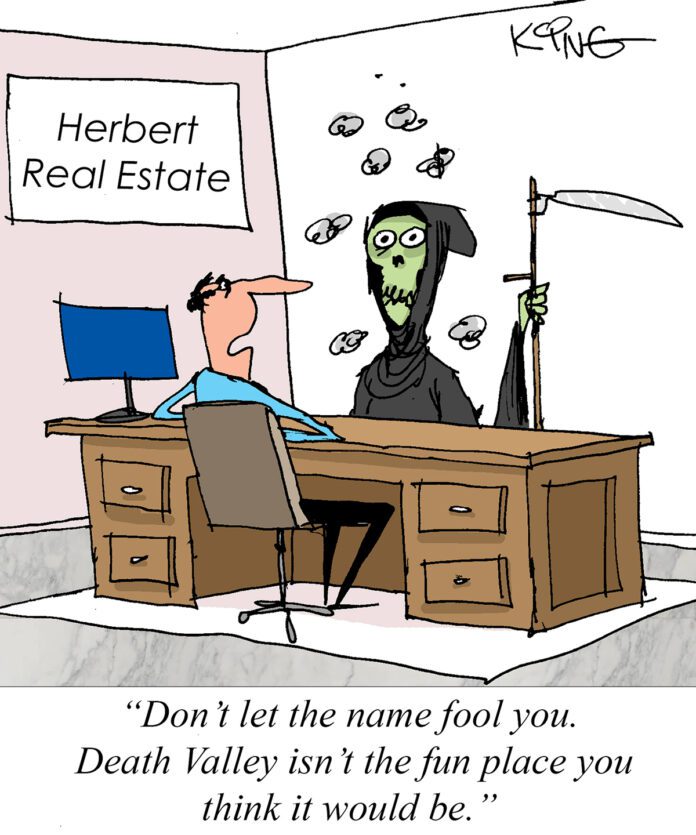TOLEDO – When Matthew J. Schroeder, interim president of the University of Toledo, speaks to community groups about his current responsibilities and the future of the institution, he hears familiar stories: Memories of attending classes or events on campus, and family members who were graduates or had medical care at a facility affiliated with the school.
Those are stories he knows first-hand – starting with his years on campus as a commuter student from Toledo, and at times working two or three jobs while studying for his bachelor’s degree in management.
“Toledo was my choice. I didn’t look anywhere else,” he said.
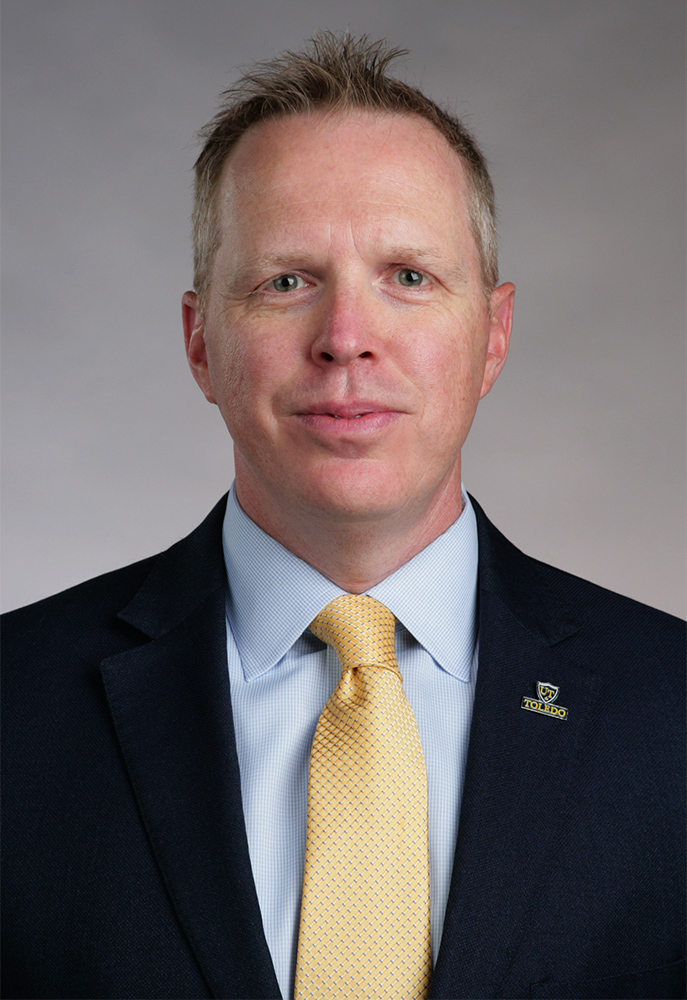
The paths to the academic buildings and hallways in University Hall were quiet when Schroeder sat for an interview on Dec. 18 with the Toledo Free Press to discuss his experience, so far, in the role. Students had wrapped up their exams on Dec. 13, and staff members were the only ones still on campus.
While his title is interim president, Schroeder insists he is not treating the role that way. His plan is to explore and present a vision for what a college president can do. He said the board of trustees gave him all the responsibility, authority, pressures… but also all of the opportunities of a campus leader during this time.
“We are resetting what a modern day university president looks like,” he assured.
Schroeder earned his master’s degree in business administration at the University of Michigan. He then worked in various leadership roles at UToledo, and also at the former Medical College of Ohio, which merged with the university in 2006.
Schroeder had served four years as chief of staff to former UToledo president Sharon L. Gaber before beginning his role in May as the school’s interim president.
During the past few months, he’s had a closeup look at a race car built by engineering students; participated in the homecoming parade; visited tailgate parties; presented his first State of the University address; and shook hands with the newest Rocket alumni when fall semester graduation took place on Dec. 14.
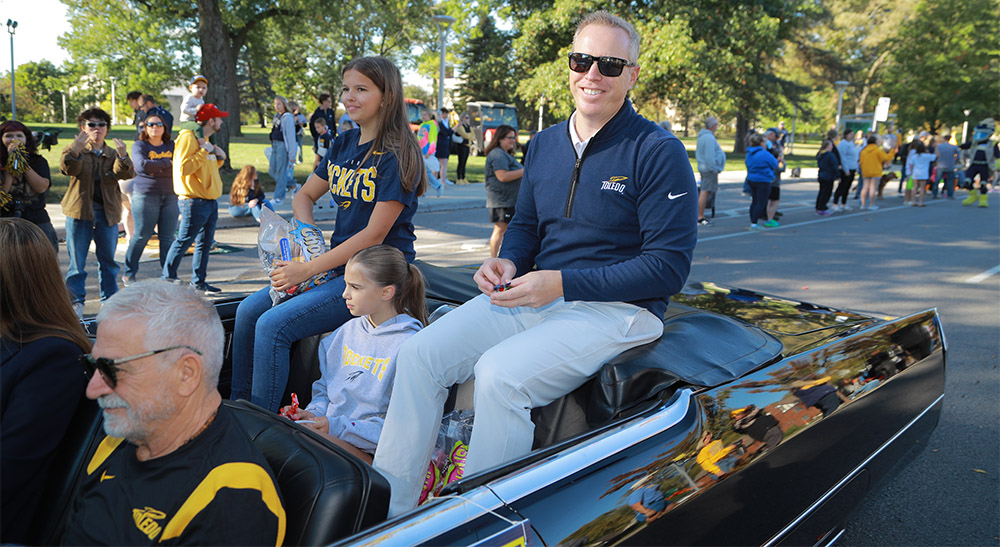

Meghan Cunningham, vice president for marketing and communications, said Schroeder even acted in a cameo in this year’s holiday video that featured UToledo’s mascot Rocky and student vocalists.
“He was a good sport!” she said about the filming.
On the topic of UToledo health services, his goals include making it easier to get appointments and recruiting physicians to serve in the community. The number of clinical trials are ramping up.
The success and reputation of recent faculty research also has resulted in bragging rights for the university, including winning competitive research grants.
“Matt Schroeder has focused UToledo on being the higher education powerhouse of northwest Ohio and beyond,” said Dr. Jerry Van Hoy, faculty senate president and associate professor of sociology, during the State of the University presentation in October.
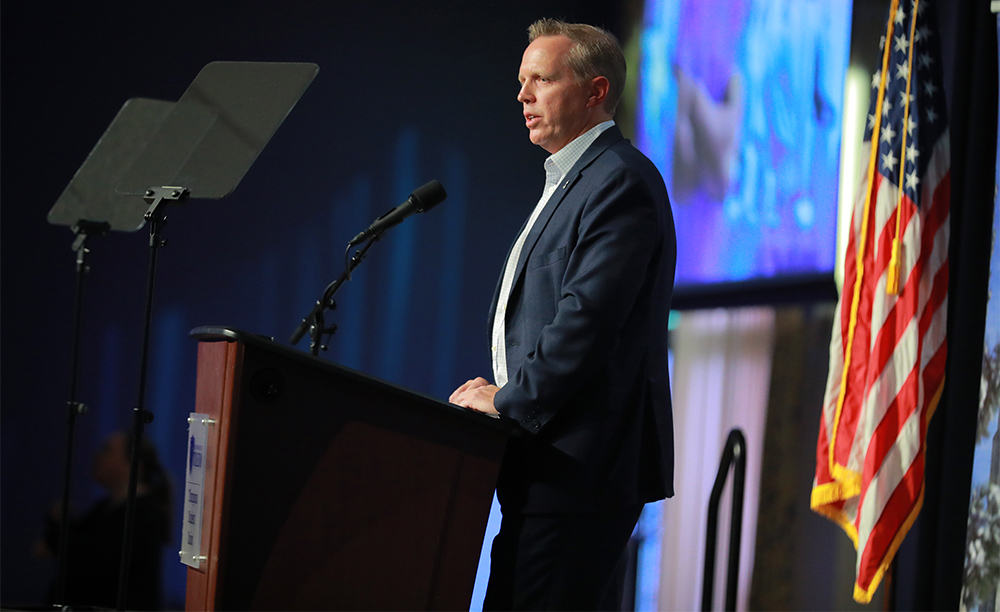

“He is developing and implementing a plan to leverage the education, the excellent educational research and clinical and community outreach successes of our institution to better serve our students and our region.”
Enrollment trends
One of the issues Schroeder has been blunt about is student enrollment trends. It came up in his State of the University speech, which was titled The Power to Do More.
“I often say we have a great story to tell. I know we do,” Schroeder said that day. “But I also will tell you that we can and must do more.”
Whether because of population demographics, overall questions about the value of a college degree, or the ripples of the COVID-19 outbreak (UToledo was among the schools canceling sports and shifting to remote learning in March 2020), it is a fact that the school has seen declines in enrollment during the past 10 years.
To reverse that trend, Schroeder called for a renewed focus on recruitment within the region, along with retention of students and a student success plan.
“We’re getting back to the fundamentals in terms of recruiting and retaining,” he said. The key to success is “winning in our backyard.”
Many of today’s students come from backgrounds similar to his – a working class family, from Toledo or just beyond, commuter student status, and having limited financial resources.
To address the concerns of those students, one of the pitches is that UToledo graduates end up with less federal student loan debt than their counterparts at other schools. Another pitch is providing and promoting innovative and relevant academics meant to prepare students for today’s workforce needs – a goal that faculty has been specifically asked to work on.
“We will review our degree programs to identify those that are in high demand now, in five years … and provide the resources to make them competitive,” he said during his remarks this fall. “If we do not have the programs students want to study, we will not be able to recruit them to UToledo.”
Now that the 2025-26 recruiting process is well under way, he is confident that the number of new students will be up in the incoming academic year.
“It will still take a number of years to be up in total enrollment,” he noted.
Schroeder encourages all students to get involved in campus events, organizations and activities – opportunities that he skipped as a commuter himself. “I missed out. It was my choice,” he said. Over time, he came to see that such activities complement and contribute to success in the classroom.
“Get engaged. Get involved,” he tells today’s students.
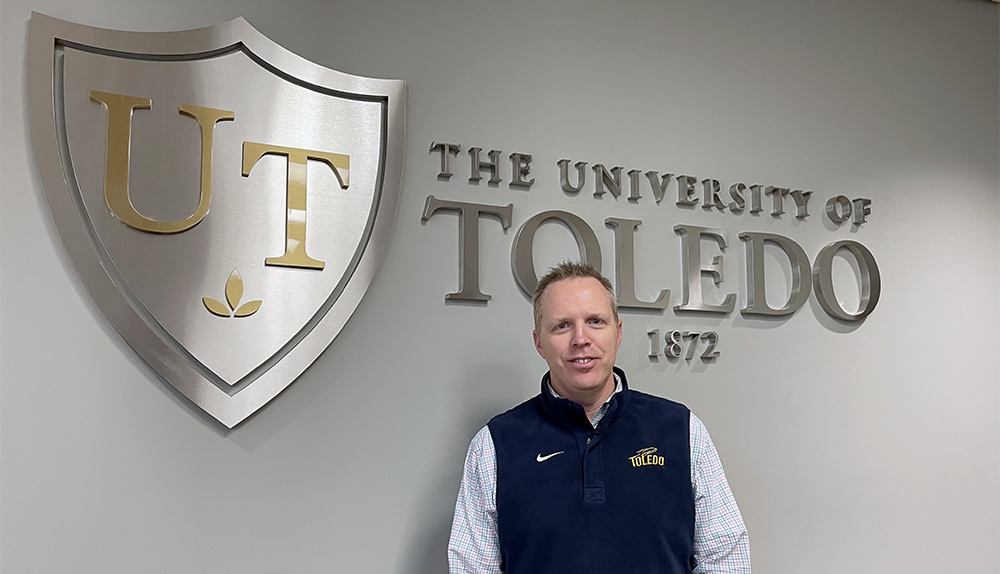

Interestingly enough, the students who experienced part of their high school or college years during pandemic restrictions are eager to do just that. Student participation in that demographic is much more noticeable than in previous years.
“You can see many of them making up for lost time,” he added.
Quick look at UToledo
University of Toledo is a regional public university serving northwest Ohio and southeast Michigan, with its origins dating to the creation of Toledo University of Arts & Trades in 1872.
The current main campus on West Bancroft St. began with the construction of University Hall in 1931. UToledo also has three other campus sites.
Significant steps include becoming part of the state university system in 1967 and a merger in 2006 with the former Medical College of Ohio. While it is a public research facility, it also is an academic medical center with health services run under the brand UToledo Health.
As far as athletics, student athletes compete in NCAA Division I sports through the Mid-American Conference. Students also can get involved in than 400 student organizations, including about 30 fraternities and sororities.
The fall 2024 enrollment was 14,400 students, or around 11,800 in full-time equivalent numbers. About 26 percent are first-generation students, according to the presidential leadership profile. The international students come from more than 80 countries.
Most of UToledo’s students are commuters, either from home or in privately run apartments in the neighborhood. There are five residence halls on campus housing about 1,600 students.
Presidential selection process
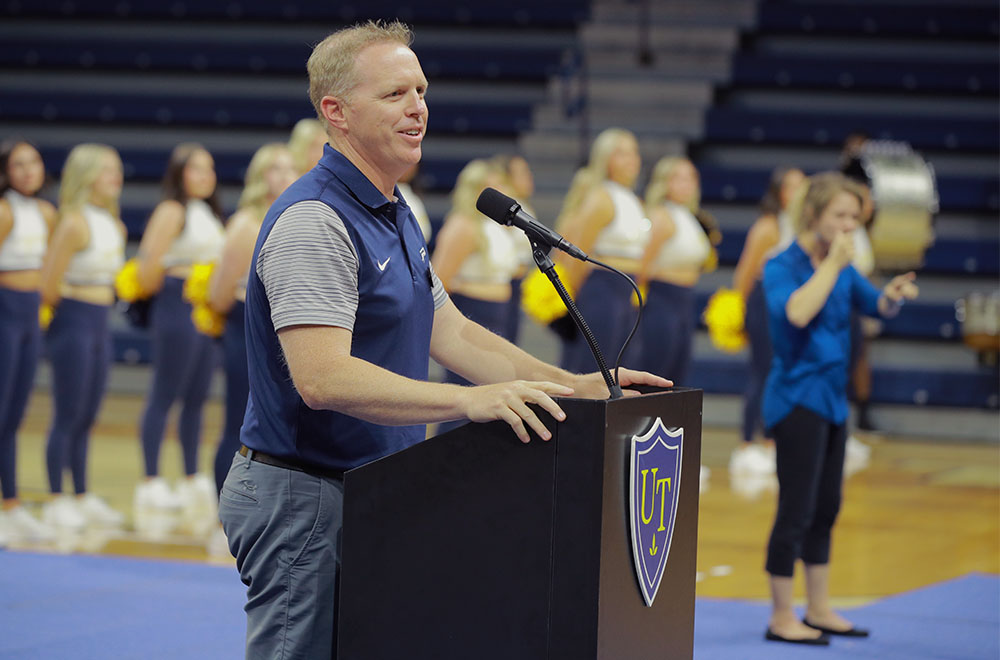

The University of Toledo Board of Trustees plans to have its next president in place before the fall 2025 semester begins, according to details posted on the university website.
The search is led by co-chairs UToledo Board of Trustees Chair Patrick J. Kenney and UToledo Trustee Stephen P. Ciucci; Education Executives is the consulting firm hired to assist.
The Presidential Profile Committee, announced in October, has issued its “leadership profile” report, which includes the following:
The University of Toledo seeks a President who understands the exceptional opportunity this University presents. The University is recruiting a visionary leader committed to imagining the potential of this institution and who will leverage its excellent resources for the 21st century. In so doing, UToledo will set the benchmark for what a public research university can and should do for its community and the world.
The formation of the Presidential Search Committee was announced Dec. 4. That group includes community leaders, university trustees, faculty and students – along with some people from the presidential profile committee.

